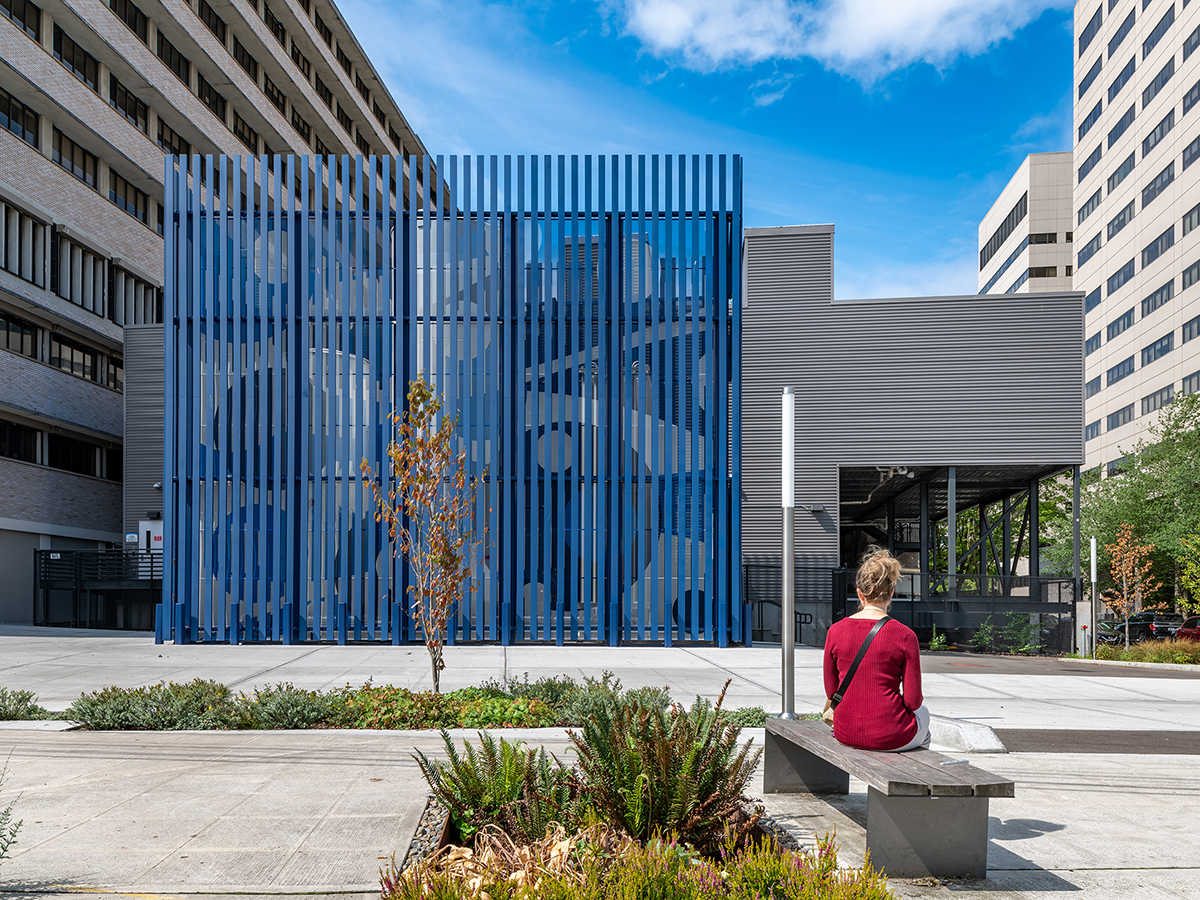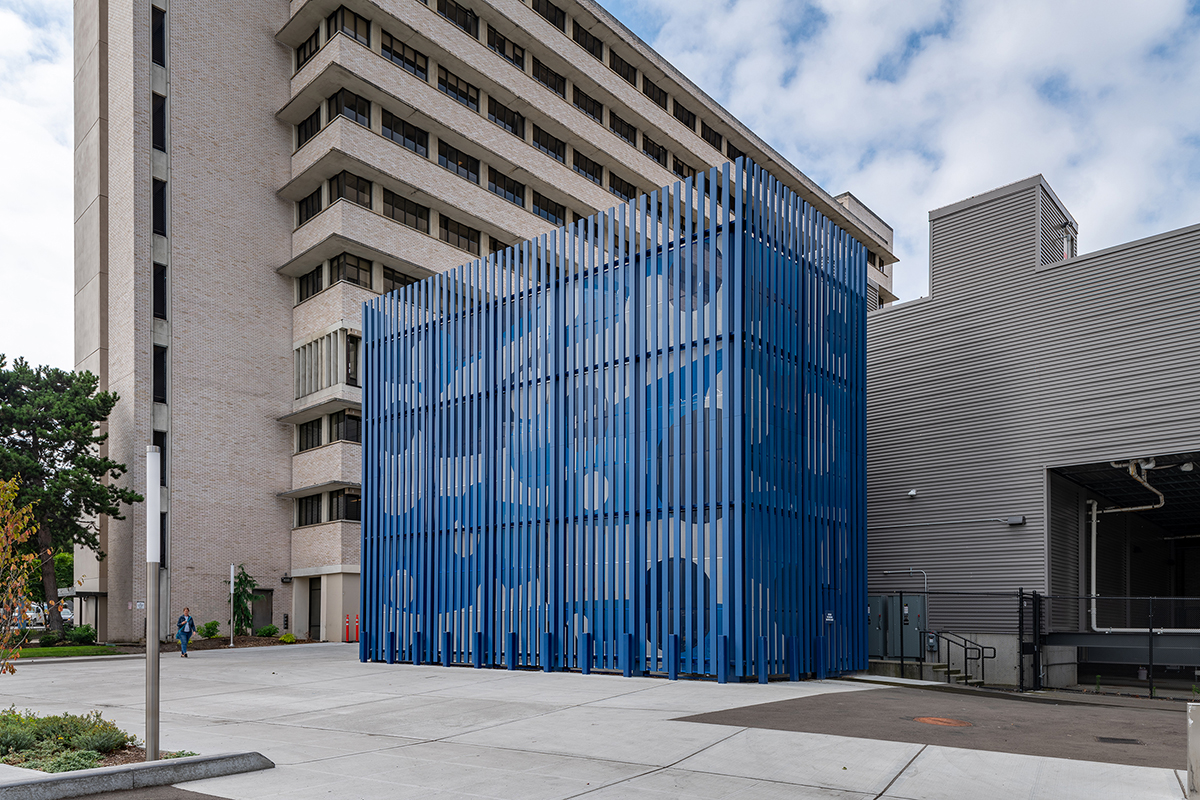Blog
Swedish Medical Center Oxygen Tanks
First Hill Gets a Big Breath of Fresh Air

The dynamic installation — a celebration of the vital role air plays in our lives — both protects and disguises the oxygen tanks that Swedish relies on to help its patients breathe.
How do we honor and represent one of the most vital molecules to our health, environment, and world? And how can we bring some playfulness to such a serious subject? These two questions were at the core of the graphic installation that we designed and built around Swedish Medical Center’s two oxygen tanks.
Due to construction, the tanks — two large, white cylinders — were moved to a new, more visible location at the intersection of Broadway Avenue and Marion Street in Seattle’s First Hill neighborhood. Our task was to make the required security fence look better. However, we quickly realized that it presented an opportunity to create a one-of-a-kind experience. Using the concept of a moiré or stereograph pattern, we could create a dynamic installation that expressed Swedish’s unique brand of wellness, engaged the diverse surrounding community, and satisfied the functional design requirements (protection, ventilation, and durability).
Working closely with Swedish and the architecture firm Perkins & Will, we got to work. We tested out ways we could use 2D graphics, such as moiré and stereographs, to create a parallax barrier effect — a visual that appears to move — with the fence. Such motion would make the installation dynamic and interactive, and offer a little something unexpected.
 We incorporated the vertical slats of the security fence into a kinegram, a simple form of animation. As you pass by, the striped overlay of the slats interacts with the abstract pattern behind, and the installation appears to move.
We incorporated the vertical slats of the security fence into a kinegram, a simple form of animation. As you pass by, the striped overlay of the slats interacts with the abstract pattern behind, and the installation appears to move.
We settled on a kinegram (also known as picket-fence or barrier-grid animation), a simple form of animation that involves the moving of a transparent striped overlay in front of an interlaced image. The fence’s vertical slats (serving as the overlay) paired with a secondary graphic would create the illusion of motion and life.
For the graphic behind the slats, the second piece of the kinegram, we drilled down into the connection between oxygen and wellness, exploring visual concepts ranging from human lungs to running to clouds. We landed on the most vital representation of oxygen — the air we breathe — as it most expressed what we, and Swedish, hoped to convey: breathing is life.
The abstract pattern was inspired by the act of breathing in air — note the waves and bubbles — and printed on perforated metal panels. Because the metal panels were required to have a 50-percent open pattern for ventilation (resulting in a level of transparency), we scaled up the graphic and increased its contrast to enhance boldness and visibility.
For the graphic behind the slats, we landed on the most vital representation of oxygen — the air we breathe — as it most expressed what we, and Swedish, hoped to convey: breathing is life.
When someone walks by the installation, the vertical blue slats of the security fence interact with the abstract pattern behind them to create an animated sequence and the illusion of moving air. As you move, there is a “flip” back and forth effect: some visuals in the two images change, while others do not.
The large-scale graphic transforms the environment into a more inviting space, playfully evoking the qualities of air through its undulating shapes and bright, bold colors. It’s sure to catch a passerby’s attention and offer them a moment of surprise and wonder.
The best way to experience the installation’s full effect? Ride by on the Broadway Avenue streetcar.
Published on 15 April 2020